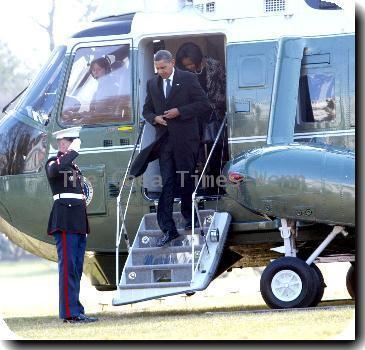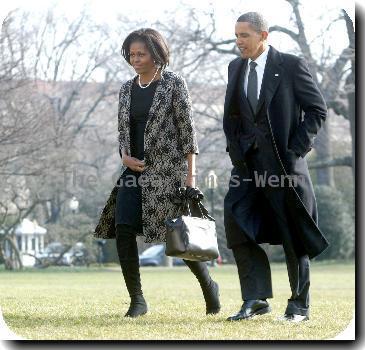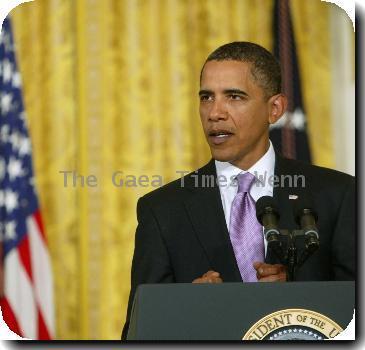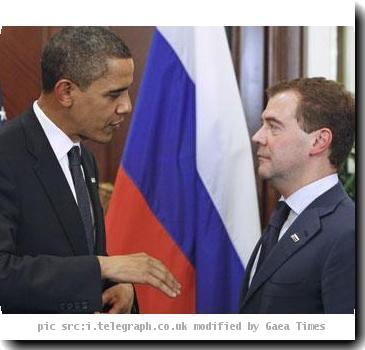Families grieve for W.Va. coal mine blast victims as crews make 4th search for survivors
By Vicki Smith, APFriday, April 9, 2010
Mourning begins as W.Va. mine search resumes
MONTCOAL, W.Va. — Grieving relatives began burying victims of the Upper Big Branch coal mine disaster Friday as rescue crews ventured back into the blast-damaged shaft for another agonizingly slow, dangerous and probably hopeless search for survivors.
It was their fourth attempt to find the four miners missing since Monday’s explosion killed 25 others in the nation’s worst underground disaster since at least 1984. During the previous rescue attempts, searchers were forced to withdraw by dangerous gases and the risk of fire or explosion.
“We are praying for a miracle,” President Barack Obama said in Washington.
Rescuers acknowledged that was what it would take for the miners to have made it to a refuge chamber stocked with food, water and enough oxygen for several days.
On Friday morning, rescuers made their way about 1,000 feet underground and five miles into the mine to examine one of the chambers, but no one was inside and smoke forced them to turn back before they could check a second one that would represent the last hope the four were alive.
“We’re confident that if they got in there, and they were alive, that we would be able to still rescue them,” said Kevin Stricklin of the federal Mine Health and Safety Administration.
The area was flushed with nitrogen and crews headed back inside in the afternoon for what was likely to be a three- or four-hour trip to the chamber, an expandable box activated by opening a door and pulling a lever.
Officials had hoped to lower a camera into the mine to see if the chamber had been used, but the hole was drilled slightly off target, and Stricklin said they would not have been able to see anything.
More than 300 people packed the Mullens Pentecostal Holiness Church for the funeral of Benny Willingham, a 61-year-old miner who was five weeks from retiring when he died.
He was saved 19 years ago this week, said Rev. Gary Pollard, pastor of the Mullens Family Worship Center, where Willingham was a deacon. The two had weekly 45-minute talks — about God, about Christian living, about their families and friends — every Sunday morning for the past five years.
Pollard said the last time he saw Willingham, the miner’s words were almost prophetic: “If I die tomorrow, I’ve lived a good life.”
“He wasn’t the biggest man in town. He didn’t have the stature of some of you sitting here,” said Pollard, whose own church across town was too small for the crowd. “But if you could see the size of this man’s heart, you’d see a giant.”
Willingham was dressed in a red shirt in the open coffin, jet-black hair and mustache neatly combed, family snapshots tucked in the satin around his head and shoulders. The image of a pick, shovel and miner’s helmet was embroidered in the fabric along with his name, and a flag draped the lower half of his coffin in a nod to his service during the Vietnam era in the Air Force.
Three Air Force veterans, friends of his for more than 40 years, traveled with their wives from Ohio, California and North Carolina to say goodbye.
“That’s astonishing,” said the Rev. Lewis Arnold, pastor of the host church, “but that is Benny Willingham.”
Officials suspect the blast was caused by a buildup of methane gas. In the nation’s capital, Obama said he asked federal mine safety officials to give him a report on the disaster next week, and the House and Senate said they would hold hearings.
In the days since the explosion, details have emerged about a long list of safety violations at the mine. The owner, Massey Energy Co., has been repeatedly cited and fined for problems with the system that vents methane and for allowing combustible dust to build up. CEO Don Blankenship has strongly defended the company’s record and disputed accusations from miners that he puts coal profits ahead of safety.
Federal regulators issued evacuation orders for all or parts of the mine more than 60 times since the start of 2009, according to a report prepared for Sen. Robert Byrd, D-W.Va.
On Sept. 23, 2009, an evacuation order showed an inspector found that management considered production more important than safety twice at Upper Big Branch mine for skipping mandatory checks of a piece of heavy equipment.
Management’s conduct was more than ordinary negligence because “production was deemed more important than conducting parameter checks on the continuous mining machine,” according to the inspector’s notes released Friday by the Mine Health and Safety Administration. The citation said the mine operator complied with the requirements later that day.
In 2007, the mine met criteria to be declared by MSHA to have a pattern of violations. That would have allowed stricter oversight by the federal agency and could have led to the shutdown of the mine, but Massey was able to reduce the number of the most serious violations and avoid the declaration.
Pam Napper, whose 25-year-old son Josh died in the explosion, said the young man had been sent home from work early on the Friday before the disaster.
“He said, ‘Mom, the ventilation’s bad,’” she recalled. “And they sent him out of the mines. Everybody. He went back to work Monday.”
Before that, apparently over Easter weekend, he wrote a letter to his mother, his fiancee and his 19-month-old daughter, telling them that he would be looking down from heaven if anything happened to him.
“I just knew that Josh in his heart knew that something was going to happen,” Pam Napper said.
Of the 25 confirmed dead, 18 bodies remained inside the mine, and Stricklin said crews will turn their attention to removing those once they determine whether anyone is still alive.
About two dozen people gathered outside one of the entrances to Upper Big Branch in show of support, waving signs reading “Praying for 4 miracles” and “Gold Bless WV Coal Miners.”
“You’ve got to think there’s hope. That’s all we got,” 65-year-old John Bell said at a diner nearby.
Associated Press Writers Allen G. Breed, Greg Bluestein, Tim Huber, Tom Breen, Dena Potter and John Raby and videojournalist Mark Carlson in West Virginia; Mitch Weiss and Mike Baker in North Carolina; Ray Henry in Atlanta; and Sam Hananel in Washington contributed to this report.
Tags: Barack Obama, Energy, Explosions, Government Regulations, Industry Regulation, Materials, Montcoal, North America, Personnel, Search And Rescue Efforts, United States, West Virginia





